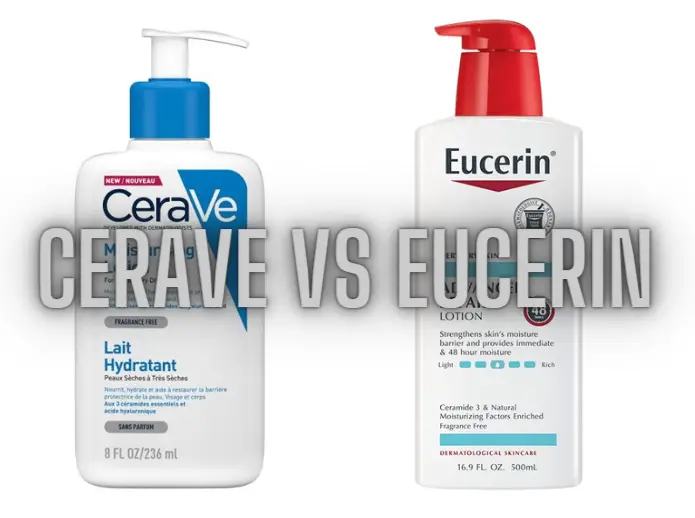In the ever-expanding universe of skincare, two brands have consistently garnered the trust of consumers and dermatologists alike: CeraVe and Eucerin. Renowned for their clinically oriented formulations and accessibility, both brands have secured their places as staples in daily skincare routines. But when pitted against each other, how do they fare? This article delves deeply into their histories, product offerings, key ingredients, target concerns, pricing, consumer perceptions, and more to help you make an informed decision.
CeraVe: The Ceramide Champion
Founded in 2005, CeraVe has quickly risen to prominence in the skincare industry. This brand has been developed with dermatologists and is characterized by its inclusion of ceramides in all its products.
Brand Philosophy
CeraVe’s philosophy is “therapeutic skincare for all.” The brand focuses on restoring and maintaining the skin’s natural barrier with a combination of three essential ceramides (1, 3, and 6-II), fatty acids, and other lipids.
Product Range
CeraVe offers a comprehensive range of products, including cleansers, moisturizers, serums, and sunscreens. Their product lines cater to different skin types, from dry to oily, and address various skin issues, such as acne, eczema, and psoriasis.
Eucerin: The Sensitive Skin Specialist
With a history dating back to 1900, Eucerin has over a century of experience in medical skin science. Eucerin is often recommended by dermatologists for its focus on providing gentle and effective skincare solutions.
Brand Philosophy
Eucerin’s philosophy is built on trust and reliability, with a focus on innovation and medical skin science. It aims to provide products that support skin health and work to alleviate a range of skin conditions.
Product Range
Eucerin’s product lineup spans from moisturizers and body lotions to cleansers and sunscreens. Specialized ranges like Eucerin’s Advanced Repair for very dry skin and Eucerin’s Eczema Relief for eczema-prone skin are well-regarded.
Key Ingredients Showdown
Both CeraVe and Eucerin emphasize the importance of ingredients that support skin health, but their key components differ slightly.
CeraVe’s Signature Components
- Ceramides: Essential for healthy skin, ceramides help restore and maintain the skin’s natural barrier.
- Hyaluronic Acid: This substance aids in retaining moisture, keeping skin hydrated and plump.
- Niacinamide: Known for its anti-inflammatory properties, niacinamide helps to calm the skin and can assist in repairing the skin’s barrier function.
Eucerin’s Signature Components
- Urea: An effective moisturizer that helps to keep the skin hydrated and is particularly good for dry and rough skin.
- Alpha Hydroxy Acids (AHAs): Used for exfoliation and to improve skin texture.
- Licochalcone A: An extract from licorice root, it has skin-soothing properties, making it ideal for sensitive and redness-prone skin.
Target Concerns and Effectiveness
CeraVe’s formulations aim to hydrate and replenish the skin’s natural barrier, making them excellent for all skin types, but particularly beneficial for those with dry or compromised skin. Eucerin, with its wide range of products, targets specific skin issues more extensively, including aging skin, hyperpigmentation, and atopic dermatitis.
Consumer Perceptions and Reviews
Consumer reviews often highlight CeraVe’s effectiveness in terms of hydration and its ability to improve the overall texture of the skin. Eucerin is frequently praised for its targeted treatments and the rapid relief it provides for specific skin concerns, especially for those with sensitive or problematic skin.
Price Point and Accessibility
CeraVe and Eucerin are both positioned as affordable, drugstore brands. The prices for both lines are generally comparable, though specific product types and sizes can vary. Both brands are widely available at drugstores, supermarkets, and through online retailers.
Packaging and Sustainability
Both CeraVe and Eucerin use functional, no-nonsense packaging that is often recyclable. As consumer interest in sustainability grows, both brands have made commitments to environmental responsibility in their manufacturing and packaging processes.
Specialized Lines for Specific Needs
- CeraVe’s Healing Ointment: This is designed for very dry, cracked skin and is a favorite among those with conditions like psoriasis.
- Eucerin’s Anti-Pigment Line: This range is formulated to reduce hyperpigmentation and even out skin tone.
Both brands offer baby skincare lines, acknowledging the need for delicate formulations suitable for infants’ sensitive skin.
The Final Verdict
Choosing between CeraVe and Eucerin is a matter of understanding your skin’s needs and the benefits each brand offers. CeraVe’s use of ceramides makes it a go-to for barrier repair and hydration, while Eucerin’s emphasis on sensitive skin formulations means it often has the edge in soothing and targeting specific dermatological concerns.
Final Thoughts
In conclusion, both CeraVe and Eucerin offer valuable solutions to a multitude of skin concerns. The best choice depends on individual skin needs and concerns:
- For a compromised skin barrier or general hydration: CeraVe, with its emphasis on ceramides and MVE technology, might be the better option.
- For sensitive skin or specific skin conditions: Eucerin could provide the targeted relief and specialized care required.
Ultimately, both brands exemplify that quality skincare doesn’t have to come with a luxury price tag. By considering the factors discussed, consumers can make informed decisions and select the brand that aligns best with their skincare goals. Whether you choose CeraVe or Eucerin, you’re investing in a brand with a strong heritage of skincare science and a commitment to skin health.
References
- 1Source.com: Ingredient Decoder
- PubChem

